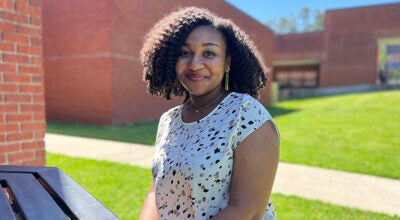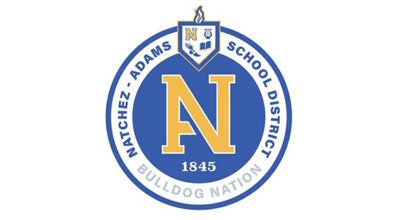Teachers head to school to give students head start in science
Published 12:05 am Tuesday, July 24, 2012

Ben Hillyer/The Natchez Democrat — Natchez-Adams School District science teachers Terri Fuqua, left, and Kenethia Doss check out the rainbow color effects of their holographic diffraction glasses. Fuqua and Doss were attending a teacher science academy at Natchez High School Monday.
NATCHEZ — Their students might be cruising the playgrounds or cannonballing into pools, but for a group of teachers, it was back to school this week.
The Natchez-Adams School District hosted a teacher’s science academy at Natchez High School’s campus for teachers of grades kindergarten through 12th.
“It gets us back in the mode of things,” said Terri Fuqua, a third-grade teacher at McLaurin Elementary School.
Fuqua and her fellow teachers sat in desks formed in a semi-circle Monday as they listened to consultant Lillie Akin give tips for managing science lab experiments.

The view through a pair of holographic diffraction grating glasses shows a series of prism effects as Linda Patten looks through her glasses.
Akin said in each lab group, each student should be assigned a job as either the project director, materials manager, reporter-recorder or a graphic artist.
That way, the teacher knows only one person from each group should be moving around — the materials manager — so the teacher can better manage the class.
“Let them know you’re in control,” Akin said. “You’ve got to get the management (down) and let the kids go to work.”
Akin showed the teachers a sample notebook in which the student recorder-reporter writes down the observations, conclusion and other notes.
“I like that — it’s ready to go,” said Katangela Scott, a third-grade teacher.
The teachers’ eyes lit up as Akin gave more tips.
Fuqua said she liked the idea that children incorporate writing into their science and math, which NASD Instruction Coordinator Bettye Bell said is a goal the district will continue to emphasize.
Cross-curriculum instruction, where specific lessons cross paths in several core subjects, is an important aspect of the new common-core curriculum, Bell said.
“When you talk about a butterfly (in science) and go back and read a poem about a butterfly, it takes it to a whole new experience,” Bell said.
Fuqua said a session earlier in the day about journaling in math class was another example of cross-curriculum instruction.
The science academy, which was attended by some language arts teachers as well, will continue until Thursday.
The training, which is each day this week from 8:30 a.m. to 3:30 p.m., was paid for with Title I funds, which must be spent on professional training, among other things.
The science academy also introduced teachers to the new kits made by Full Option Science System, which the district recently purchased for science classrooms.
“We don’t want to say, ‘OK, here’s a kit — go teach,’” Bell said.
So Akin, a consultant for the research-based FOSS, showed teachers how to use the kits to teach their students. For example, teachers can teach a lesson on light spectrum using paper glasses that divide light into rainbows like a prism. And teachers took turns measuring their arm span and heights, which can teach students about measurements and proportions.
Bell said in the past, professional development tended to focus on language arts or math, since state standardized assessments only tested science in the fifth and eighth grades and on the subject area tests in high school.
“It’s important that we build a foundation (in science)… so we have to start in kindergarten to get the (students) excited,” Bell said, “because that’s where the nation is headed — science, technology, engineering and mathematics.”





